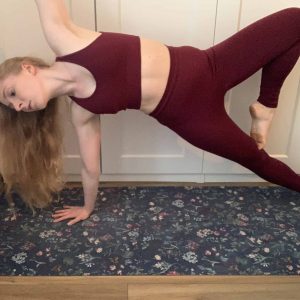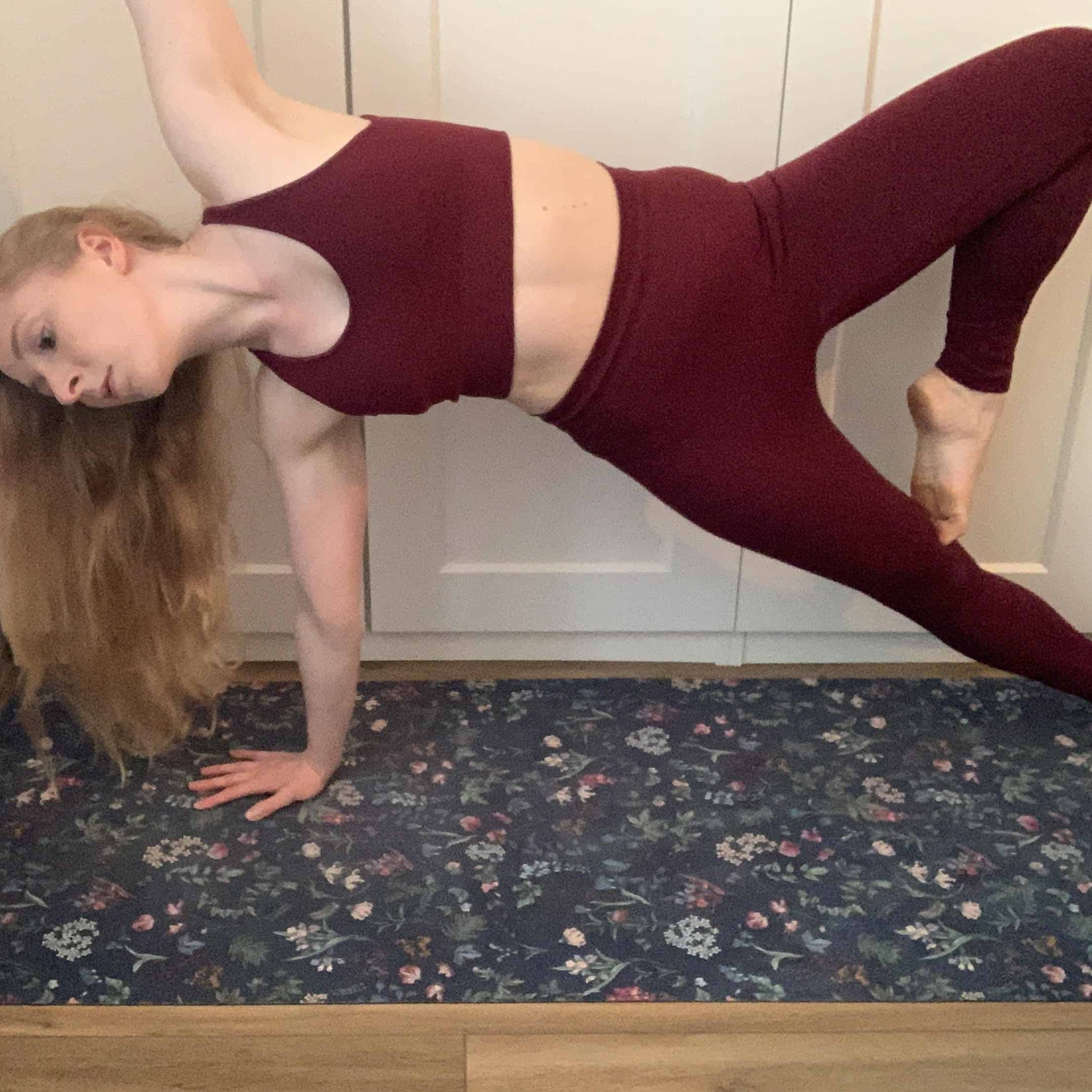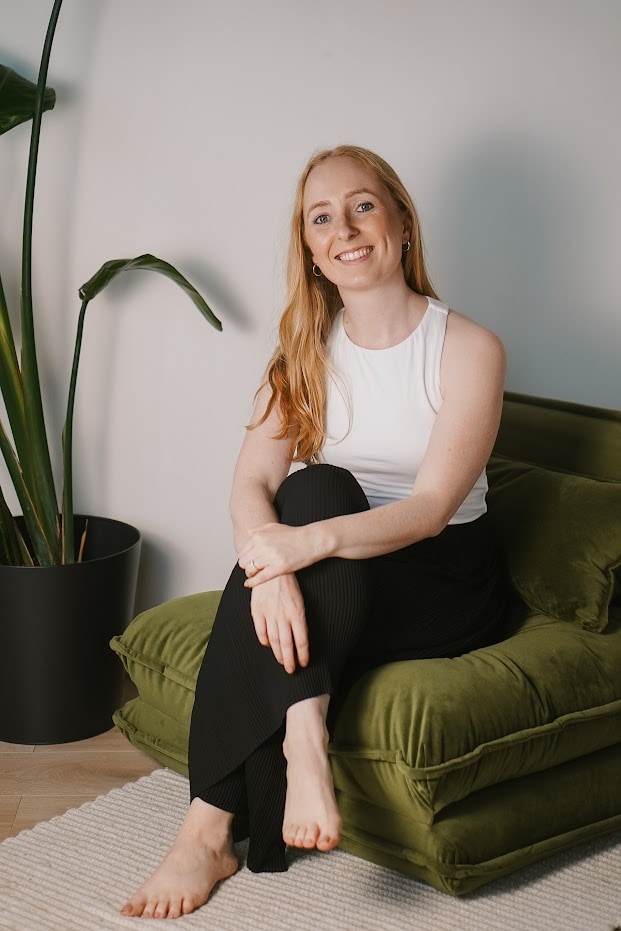How to choose a yoga mat

Choosing a yoga mat is one of the most common questions I have been asked as a yoga teacher! There is so much choice available, tonnes of features – do you want Eco-friendly? Alignment markings? Is more expensive really better? Here is a guide to choosing your yoga mat will help you work out the right type for you, to support your practice.
Does the mat offer good grip?
There are two types of grip to consider:
- Between your body and the mat
- Between the mat and the floor
Most mats will offer you a fairly good grip between the body and the mat. More premium mats often have a smooth finish, but don’t let that fool you – smooth does not necessarily equal slippy! Mats which have a top layer such as eco-polyurethane can actually increase the grip as you sweat, as the material reacts to the sweat of your body. Cheaper mats are often reliant on the texture to hold you in place, which causes the reverse to happen: as soon as you sweat, you slip and slide all over the place!
One solution to poor grip can be to put a non-slip yoga towel over the top. A cheaper mat + towel can be a mid-ground alternative to buying a more pricy mat.
The grip between the mat and the floor is where you will really see a difference between cheaper and more premium mats. But you need to also consider the surface you’re practicing on. If you’re practicing on a hard-wood or laminate floor, of course this will be more slippy than a carpet a home. So if you practice on carpet, a cheaper PVC mat may be all you need.
Does it matter what the mat looks like, or what colour I get?
Mats nowadays come in every colour and pattern under the sun, and many offer alignment markings too! But are they necessary or worth paying more for?
Alignment markings, such as on Liforme mats, indicate the centre points of the mat, and give suggested markings to place your hands and feet. As a teacher, I have mixed feelings about these alignment markings. They can offer a good roadmap and help you notice if you’re wonky or off-centre. But everyone is a different shape and size, so the postures will be positioned differently for everyone, so trying to fix your hands or feet to specific points on the mat can cause strain. If you do go for a mat with alignment markings, make sure you listen carefully to teacher guidance and don’t stick to rigidly to them.
When it comes to colours and patterns, remember that yoga is a meditative practice, and you will be using this mat potentially at different times of the day. A bright coloured mat may be fantastic in the morning when the colour energises you, but perhaps florescent yellow won’t be your vibe for an evening yin class. Also, lighter colours will show your sweat more – which is normal, and I say embrace your sweat! But if it’s a concern for you then consider a darker colour.
On the other hand, if a mat colour brings you joy and positivity, go for it! You have to look at it and practice on it, so it’s important that you like it.
Are yoga mats sustainable?
Most yoga mats are made from either PVC or rubber.
PVC mats tend to be cheaper, but PVC is a form of plastic which is often softened using harsh chemicals. If you haven’t yet watched ‘A plastic ocean’, the documentary on Netflix, I highly recommend it. We should all be moving away from single-use plastic, so if you do intend to keep your yoga mat for a long time, at least it is multi-use. But there is some evidence to suggest the chemicals used to soften the mat can be harmful to humans over time, as well as causing toxicity when disposed of in landfill.
Mats made from sustainably harvested rubber are a better way to go, if you can afford them. But be sure to also check whether the mat has a chemical or non-toxic coating, as well as whether the packaging is recyclable.
Should I go for a thicker mat?
As with anything, there are trade-offs! A thicker mat can offer you more padding, so if you suffer from sore knee or wrist joints, and/or if you practice on hard floor, then some additional support may be more comfortable. However, bear in mind that if you do have wrist or knee pain, that building strength in the core and mobility in the joints will help you more in the long run than an extra 1 or 2mm of thickness on your mat.
On the other hand, a thicker mat will be heavier and therefore harder to carry and move. If you plan to practice at home, this may be fine, but if you want to take your mat to a studio, particularly on public transport, this may be too cumbersome.
I personally prefer a thinner mat, as I find it gives me a bit more feedback and it is easier to pack in my suitcase when travelling. Remember you can always use props such as cushions or blankets, or even fold the mat over if you need a little extra padding or support.
Remember too that yoga mats are not all the same size. Some slightly wider and longer mats will also be heavier as a result. If you’re practicing at home, check the dimensions of the mat against your floorspace to make sure it will fit comfortable.
How much should I spend?
This is one of the most common questions I am asked and there isn’t a simple answer. Increasingly I’m seeing a polarisation of price points – there are plenty of cheap mats, and plenty of very premium, expensive mats, but very few in the mid-range. This can make it tricky to decide, as you have to pick between saving or splurging!
On the one hand, I recommend spending more money only when you know you will practice regularly. On the other hand, it is just as unsustainable to buy a cheap mat (particularly a PVC one!) to then throw it out as soon as you start practicing more often.
Remember that spending more on a yoga mat won’t make you practice more, nor is it a social contest for ‘most-instagrammable yoga mat’. Most will very quickly get too sticky and sweaty to look ‘instagrammable’ anyway!
You don’t need a mat to start practicing, so you can always begin by simply placing a towel on the floor and securing it in place to prevent it slipping. This way you can get a sense of how often you will practice. If you can, I recommend borrowing a mat from a friend to try it out and get a sense of what will work for you. If you do buy a cheap mat and decide to ‘upgrade’ later on, try to keep it from landfill. You can sell it only, give it away to a friend, or keep it as a back up or for other types of exercise.
And lastly, remember that mats weren’t invented when yogis first developed this practice! An expensive mat is not a necessary requirement to start practicing. You can practice anywhere, you just need to bring yourself, connect to your breath, and flow!




